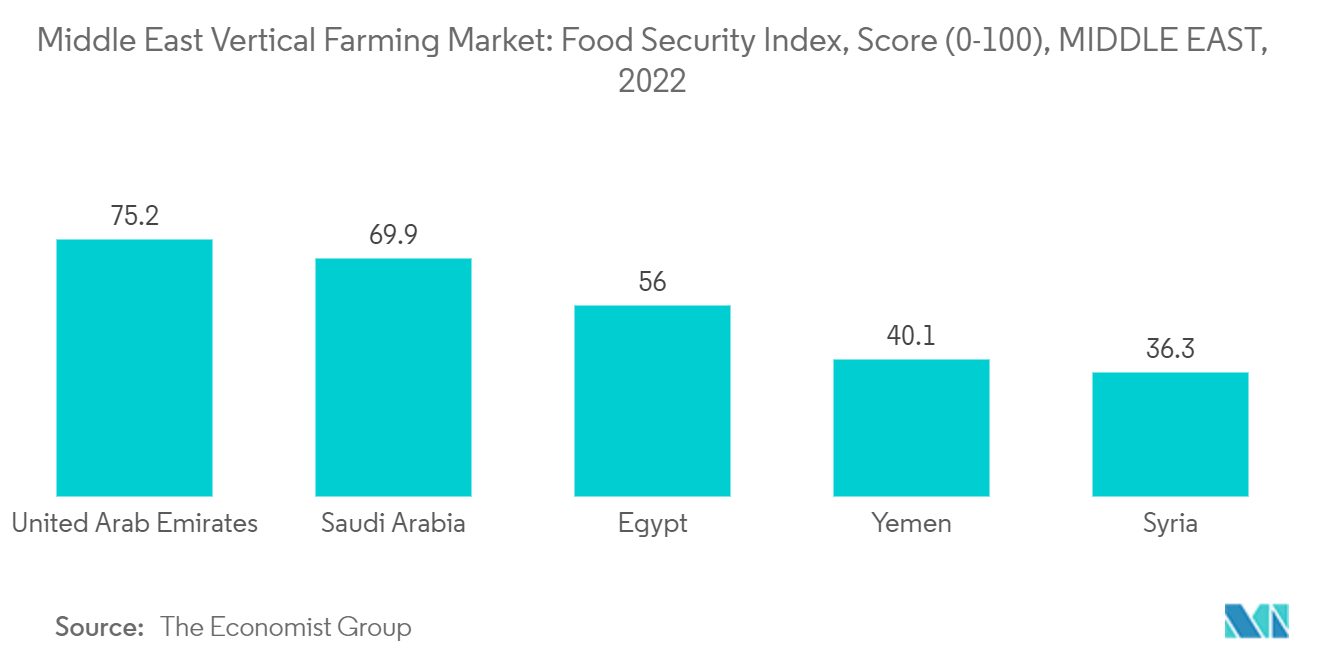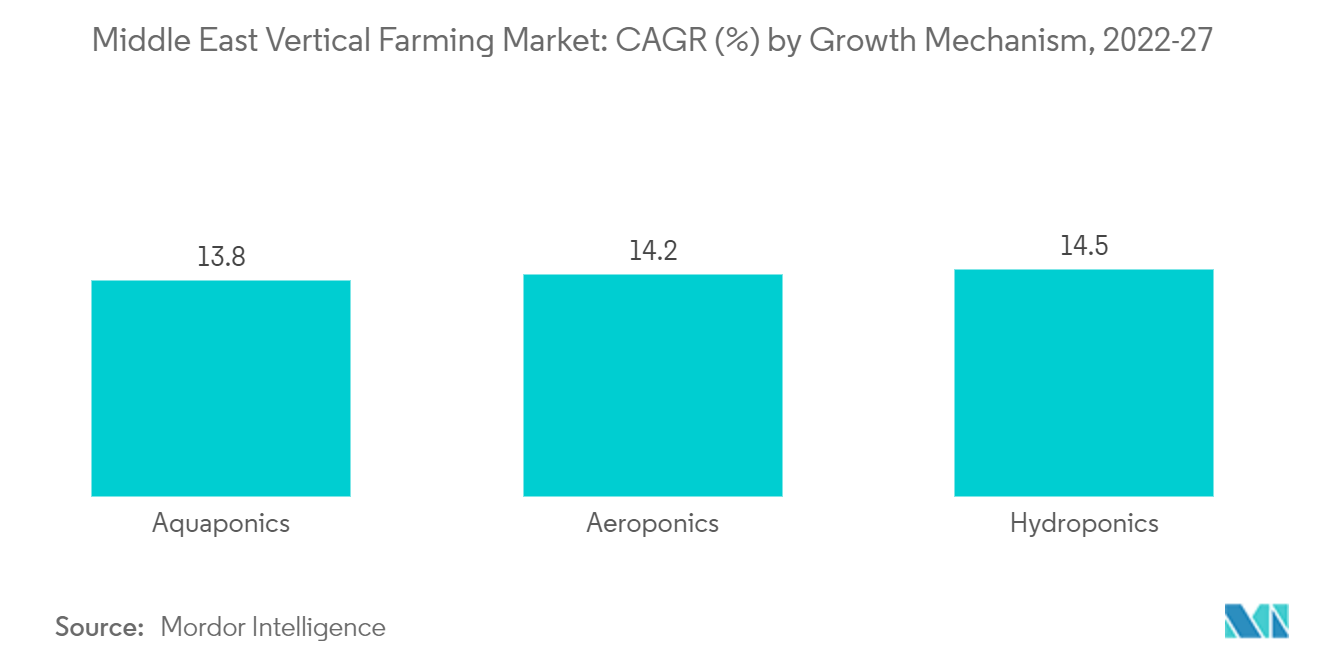Market Trends of Middle East Vertical Farming Industry
This section covers the major market trends shaping the Middle East Vertical Farming Market according to our research experts:
Emphasis of GCC Countries on Food Security
- The nations in the Middle East import a significant portion of their food. The six Gulf Cooperation Council Nations (Bahrain, Kuwait, Oman, Qatar, Saudi Arabia, and the United Arab Emirates) are estimated to import around 85% of their food, including more than 90% of cereals, meat (60%), and vegetables (50%).
- The managing director of the International Monetary Fund (IMF) indicated that 141 million people in the Middle East lack access to enough food at a conference held in Saudi Arabia in 2022.
- Some wealthy nations are only kept from dropping significantly in the Global Food Security Index by their substantial oil and gas wealth. They have occasionally invested in foreign farmlands and supply chains to ensure their food supply. However, these investments can be contentious with local populations if not managed carefully and do not reduce the prices associated with importing goods.
- Middle Eastern nations with limited land or resources are increasingly attempting to protect themselves from food shocks and disruptions in the global supply chain affected by fluctuating arable land, politics, and extreme weather.
- To address the issue of food security, Middle Eastern governments began offering special loans to encourage enterprises to embrace innovative farming methods. For instance, the Abu Dhabi Investment Office spent USD 100 million on four agritech businesses developing research and manufacturing facilities in the emirate by 2020. Dubai also opened a Food Tech Valley in early 2021, with research facilities, an innovation center, a smart food logistics hub, and vertical agricultural areas. As a result of these initiatives, the United Arab Emirates now boasts 1,000 hydroponic farms throughout the Middle East, up from only 50 in 2009.
- More governments in the region recognize the importance of vertical farming for their year-round sustainability, local fresh produce, and healthy eating policies, which is anticipated to drive the growth of vertical farming.

Hydroponics Dominates the Market
- Hydroponics is ideal for crop production in arid countries in the region like the United Arab Emirates, Qatar, and Saudi Arabia. It significantly reduces water consumption (70-90%), with less or no use of fertilizers and less agricultural area. The adoption of hydroponics is significant in the United Arab Emirates, with over 200 farms. Subsequently, vertical farms that adopt hydroponics technology are on the rise in different countries in the region, clearly showcasing the growth potential of the segment in the market.
- Advancements in agricultural technologies with large-scale, smart, and vertical farming hydroponics are expected to boost yields and ensure food security in countries in the region. There are key investments in the area to enhance local production by incorporating farming technologies and supporting local farmers and cooperatives.
- In 2020, Saudi Arabia invested USD 665 million to facilitate food imports and assist local farmers in improving crop production with hydroponics deployment.
- Moreover, the region beholds the production of rare and expensive crops in the hydroponics vertical farming system. With light-assisted hydroponics systems, UAE farmers not just effortlessly grow mass-consumed food crops but also rare and exotic plants and foods of high value, which drives the adoption of the technology and boosts the growth of the segment.
- For instance, Sharjah-based agricultural technology company Veggitech cultivated and harvested the world's most expensive spice, saffron, also known as red gold. After a few years of experiments with smaller quantities of saffron bulbs, the teams at Veggitech cultivated roughly 150,000 crocus Sativa bulbs by growing them in vertical farms in Al Zubair.

